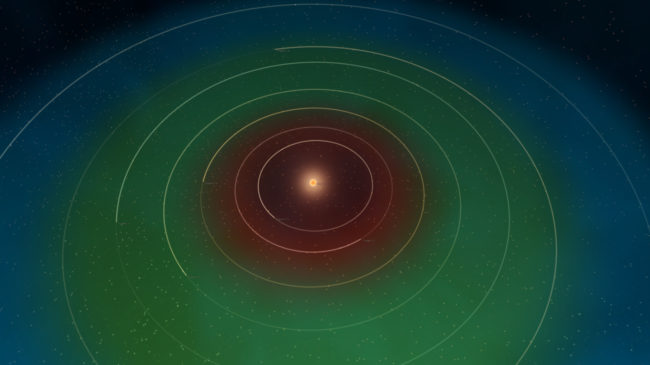TRAPPIST-1 & the Seven Planets | Alpha 19.6

Run Steam to update to Alpha 19.6, or buy Universe Sandbox ² via our website or the Steam Store.
Welcome, TRAPPIST-1 system! NASA announced yesterday the discovery of seven Earth-sized planets orbiting the ultra-cool dwarf star, TRAPPIST-1.
Check out the new simulation of the TRAPPIST-1 system in Universe Sandbox ²:
Home > Open > Core tab > TRAPPIST-1
Three of the seven planets are within the star’s habitable zone, which means that they are in an area where rocky planets have the highest likelihood of having liquid water. This also means that they have a chance of supporting life as we know it.
The TRAPPIST-1 system is relatively close to us at about 40 light-years from Earth. It is named after The Transiting Planets and Planetesimals Small Telescope (TRAPPIST) in Chile, which discovered three of the planets announced in May 2016. Then in the fall of 2016, NASA’s Spitzer Space Telescope observed TRAPPIST-1 for 500 continuous hours, confirming the original discovery and uncovering the rest of the seven planets. This is the greatest number of potentially habitable planets ever discovered around a single star.
All seven of the planets have orbits closer to their star than Mercury is to the Sun. Scientists suspect that, because of these tight orbits, they are all likely tidally-locked, as well. This means that the same side of the planet always faces the star, just as one side of the Moon always faces the Earth. But despite this proximity and being tidally-locked, they all have a chance of harboring liquid water due to the parent star’s very low temperature. Scientists say this system is a promising place to search for life, and they will continue to observe the system and its planets.
Check out the full list of What’s New.
For the latest Universe Sandbox ² news, follow us on Twitter and Facebook.


about 8 years ago
I really oved the old menu and planets, when the clouds were actually white for planets, now they are just a lighter shade than the atmosphere. speaking of atmospheres, I would love it if wnen you pressed c you would still see the atmosphere and the water to be a bit darker. Oh, and not to mention more heightmaps and textures for the moons. Maybe add a death star? Other then that, REALLY good game! When i’m feeling angry at a certain orange ugly person, i just blow earth up! Happy days!
about 7 years ago
Hi.
I am trying to represent the Trappist-1’s System on Blender but I can’t find the NASA’s textures nowhere (with NASA’s textures I mean the same textures they used into the animation of JPL’s animation). Do you know where can I find these textures in HD?
P.S.: I’m Italian and I super-like your game. I’m trying to buy it but there are a few issues. Anyway it’s great guys!
about 7 years ago
Sorry, we did not use those textures for Universe Sandbox ² and do not know where to find them.